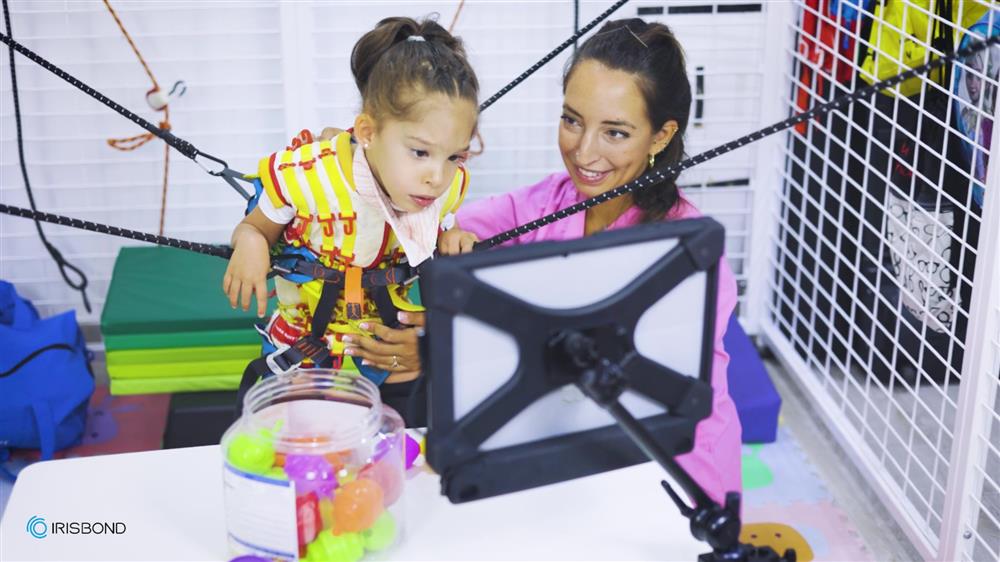An eye-tracking device for persons with severe disabilities enabling them to communicate via computers and iPads
- Solution
- Hiru
- Country of Implementation
- Spain
- Start Year
- 2013
- First published
- 03.12.2023

Solution details
“Hiru works both with Windows systems and on Apple iPads.”
IRISBOND, a medium-sized private company based in Spain, has developed an eye-tracking device called Hiru that enables non-verbal individuals with conditions such as cerebral palsy to communicate using their eyes. This technology allows them to actively participate in society by attending school, working, and engaging with others. The device consists of cameras that track the user’s eyes, allowing them to select and operate different computer applications. Hiru is compatible with Windows and Apple iPad operating systems and had over 7,000 users worldwide in 2022.
Problems Targeted
Persons with severe limitations in their upper body, their hands, or their speech cannot use computer or smartphone technology.
Solution, Innovation and Impact
In 2013, IRISBOND developed an eye-tracking device that allows people with different conditions to communicate verbally with their eyes. It supports persons with ALS, cerebral palsy, or Rett syndrome, among other conditions. Cameras detect and follow the eyes of the user, and the user can then select and operate different applications on a computer. The IRISBOND eye-tracker is designed to accompany the user, many of them using wheelchairs. It is lightweight, has a protective case, and can be attached to the user’s tablet at the necessary angle. It also has precise anchors to hold the wheelchair in place. In 2022, IRISBOND launched Hiru, which works both with Windows systems and on Apple iPads, enabling users now to freely choose the operating system and the device they prefer to use. By 2023 some 4,000 Hiru units had been sold. There are many applications available for Hiru, including desktop control applications, communication apps, learning apps, and many more to come. At a global level, IRISBOND has an expert test programme, the IRISBOND Community Programme, and volunteer augmentative and alternative communication (AAC) opinion leaders use its products and provide quality feedback.
Funding, Outlook and Transferability
IRISBOND is a for-profit company that is financed through sales and investment partners. It sells complete AAC devices and systems in two main ways: through distributors, mostly Argentina, France, the United States, and the United Kingdom; and directly in Spain, where the public health system finances its purchase. IRISBOND has plans to enter the Asian markets in 2023. (Awardee 2024)
Media
Pictures
Related information
- Connections
- 1
-
People